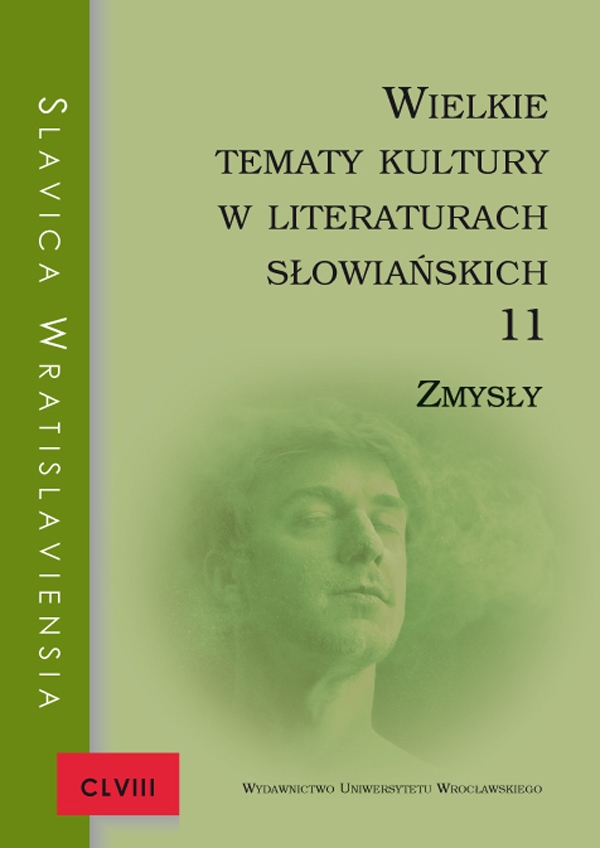

Artykuły

To see and to picture something without a form. Gennady Ustyugov and Valentine Samarin and specific nature of their approach to art
The research material for the article comprises artistic output of two renowned artists of the Leningrad underground, namely a painter and poet Gennady Ustyugov and a photographer and abstractionist painter Valentine Samarin. Ustyugov’s deeply philosophical painting, which to a certain extent fits into the experience of the Russian symbolism and Old Russian icons and frescos, enables us to conclude that the eyesight of the artist enables him to reach transcendental space. It is where he saw and presented in his paintings an ideal of a lady, girl, maiden, who under the flexible, fluid line of the artist evolved and revealed itself as an angel or a wanderer pilgrim. In Ustyugov’s lyric miniatures, the lonely, alienated, and full of yearning self continuously searches for the beloved lady. Although the sight of the lyric self found the ideal several times, it was not given a chance to enjoy a closer encounter and share his life with her. While registering the reality surrounding him, his eyes concentrate on the beauty of God’s world of nature, but it is a view of a child who recognises what is minute, small, insignificant and unnoticeable. An artist abstractionist Valentine Samarin armed his sight with a photographic camera and focused on people and objects from the world of art. In his unique photographs SANKI, he in-tuitively or fully intentionally matured in the process of watching and in the process of creation preserved those meta-dimensions, internal energy of transcendental being invisible for an eye, and particular importance about which he was deeply convinced.
Zobaczyć i nadać obraz temu, co oblicza nie posiada.
Giennadij Ustiugow oraz Walentin Samarin i specyfika ich spojrzenia artystycznego
Materiał badawczy artykułu stanowi dorobek artystyczny dwóch uznanych twórców leningradzkiego undergroundu: malarza i poety Giennadija Ustiugowa oraz fotografa i malarza abstrakcjonisty Walentina Samarina. Głęboko filozoficzne malarstwo Ustiugowa, w które w pewnej mierze wpisane jest doświadczenie symbolizmu rosyjskiego oraz staroruskich ikon i fresków, pozwala konstatować, że zmysł wzroku tego artysty pozwala mu sięgać w przestrzeń transcendentną. To właśnie tam ujrzał i przedstawił na swych obrazach ideał — damę, dziewczynę, pannę, która pod giętką, płynną linią artysty ewoluuje i przyjmuje postać to anioła, to wędrowcy pielgrzyma. Natomiast w Ustiugowskich lirycznych miniaturach samotne, wyobcowane, przepełnione tęsknotą „ja” nieustannie poszukuje owej ukochanej damy. I choć wzrok lirycznego „ja” kilkakrotnie ją — wymarzony ideał — odnajdywał, to nie dana mu została radość bliższego poznania i wspólnego dzielenia z nią życia. Jego oczy, rejestrując otaczającą rzeczywistość, koncentrują się na pięknie Bożego świata przyrody, ale jest to spojrzenie dziecka, które dostrzega to, co malutkie, drobne, nieznaczące, niezauważalne.
Artysta abstrakcjonista Walentin Samarin swój wzrok uzbroił w aparat fotograficzny i skierował ku postaciom oraz obiektom świata sztuki, intuicyjnie lub też w pełni świadomie dojrzał w procesie patrzenia i utrwalił w procesie twórczym na swych niepowtarzalnych fotografiach SANKI te metawymiary, tę niewidzialną dla oka wewnętrzną energię, o której transcendentnym istnieniu i szczególnej wadze jest głęboko przekonany.